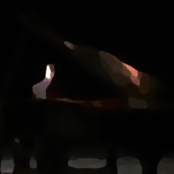Search the Community
Showing results for tags 'sonata'.
-
This is my first sonata, it has two movements. In first, I played with the esthetic of minimalism, and in the second I clashed few different styles in rondo-like form to get some comic but still captivating effect. Feel free to give any comment, advice, suggestion :)
-
Hey guys! So, I'm a little mentally exhausted -- I'm just after writing nine pieces in the past three days (which will all be uploaded soon.) This is my first true chamber sonata for oboe and piano, and I hope you guys enjoy. I really enjoy writing in this form, so let me know what you think and thanks for the help.
-
Opus 7-1(Allegro misterioso) and Opus 7-2(Moderato grandioso) sonata written for piano and harpsichord(part three coming soon). Opus 7-1.mp3 Opus 7-2.mp3
-
This is a set of three pieces, though composed individually, that I put together as a single opus number, each reflecting an attempt to compose within a specific style. The first is a "sonata" akin to the single movement works of Domenico Scarlatti. It originally started as a possible movement for my harpsichord concerto which I later just used as a stand alone solo keyboard piece. It is playable for harpsichord or piano. The second is a movement in classical sonata form that was originally an assignment for a music theory class. It's probably the most "pedantic" of the group being in very tight sonata form. The last is a romantic style prelude. It is a piano transcription of the cadenza to the ending of Fantasy for violin and orchestra that I wrote about 5 years ago.
-
Hi all. Here is the 4th movement of my recently finished sonata in E. It is generally in the style of Beethoven/Mozart. I am quite pleased with how it has progressed. I would value any feedback. I am blessed to be able to share it. The sheet music was written with MuseScore, which is a neat little program. If you wish to listen, simply go follow the link and hit play. Cheers. https://musescore.com/user/9350326/scores/2120656 Because it is being played off the score, it will lack a little of the human touch, but it will give a pretty good idea of the overall sound of the movement. :)
- 4 replies
-
- 4th movement
- sonata
- (and 6 more)
-
Hi, I was wondering about sonata form. In a classical period style sonata in a major key, two different theme groups found in the exposition are usually in the tonic (group A) and dominant key (group B) of the piece. In general, how do these different theme groups A and B differ from one another? (With regards to melodic content, liveliness, dynamics, etc.) And, conversely, should they share any characteristics or motives? If you're interested, I'm wondering what sort of group B to follow the first half of the exposition in this piece: http://www.youngcomposers.com/music/listen/6083/woodwind-trio-in-eb/ Any help, suggestions or insight would be greatly appreciated!
-
Is it so important to avoid any reference to the 1st key in the 2nd theme of the exposition? I think it's no big deal, but if I ever post the sonata form I'm writing, I guess everybody will point it out and bash the piece. The piece starts in G min and modulates to Eb maj for the 2nd theme group. However, I made a feminine P.A.C. in G min at the end of a phrase of the 2nd theme, even though that key is not "confirmed". Eb maj is still the prevailing key: Start 2nd theme--> Eb [...] Fmi Ab/C D7 Gmi Fmi7 Eb/G [...] Eb/Bb Bb7 Eb <-- End I've tried workarounds (deceptive or inverted cadences...) without success. The melody seems to "call" for that cadence What do you think? Thanks
- 4 replies
-
- tonicization
- sonata
-
(and 1 more)
Tagged with:
-
Hi, I'm new here, so forgive me if I'm doing something wrong. I'm writing a sonata-form movement in Romantic style (Schubert, Brahms...). I've written: 1st theme (8+8 bars), ending on i (G min) transition (G min >> Eb) 8 bars of the 2nd theme (starts at bar 57), ending on V (Bb major chord) However, I'm stuck here. :dunno: I've just moved from a classical to a romantic style, and the proportions are bigger. I know I should write something looser and more lyrical here, and it should be roughly 50-60 bars long for balance. I could use more than 1 theme (?), and perfect cadences should be used sparsely. I tend to write very "marked" self-contained themes, like the 1st one, so my initial idea was to write another 8+8 antecedent/consequent. But I can't do this, I must include more material before the V-I and the codetta. Thus, I've written some "continuations" after the 1st 8 bars ending on V, as well as a climax based on that tune, and a little codetta... I don't know how to assemble all that stuff. I've checked out tons examples, but I'm kinda blocked. Any tips? What is your experience? Thanks!! :D
- 2 replies
-
- sonata form
- sonata
-
(and 6 more)
Tagged with:
-
I have been playing piano for about 6 years now, and have just recently (the past month or so) started composing my own piano pieces. I mostly play contemporary music and improv, but I have taken an interest in classical music, more specifically, bagatelles, preludes, etudes, and sonatas for the piano. My question is this: What gives a piece that "classical sound". When I compose a piece, and listen to it, it sounds very contemporary and modern. How can I achieve a more classical era style? Are there specific rules or guidelines that these composers follow? Thanks.
-
Duo Sonate - For Two Bassoons Composer: Sophia Gubaidulina I first heard the work of Gubaidulina late one night while perusing concerti on YouTube. The piece that caught my eye was her Viola Concerto. I wasn't necessarily familiar with her music, but was very familiar with the violist performing it. The music left me breathless. The structure, the pacing, the harmonic language, the orchestration, and the treatment of the solo line all were very well done. It was from this piece that my deep love of her music grew immensely. When asked to research composer's works for the composition lesson, I quickly chose Gubaidulina. The work I chose, sadly, wasn't the viola concerto but instead a smaller chamber work: . In this analysis, I will look at the structure of the piece.In looking at the score in depth, I was quite surprised to find that the form is quite traditional: sonata form. The reason for the surprise comes in the techniques used in the bassoons: flautando, multiphonics, harmonics, and microtones. Granted, these shouldn't immediately dismiss the possibility of a traditional form being used to structure a piece. The formal sections are: -the introduction lasts from the opening to rehearsal mark 2. -the exposition from rehearsal mark two to the Grand Pause that precedes rehearsal mark 13. -the development from rehearsal mark 13 to the grand pause that precedes rehearsal mark 31. -the recapitulation from from rehearsal mark 31 to roughly rehearsal mark 35. -the coda from rehearsal mark 35 to the end. The exposition breaks into roughly 5 subsections of interest. The first is from rehearsal mark 2 through rehearsal mark 5. This subsection is the first theme of the work. The second is from rehearsal mark 5 through rehearsal mark 6. This short passage, at first, appeared to be inconsequential or transitional in nature. It wasn't until the development section that I realized this was actually a second theme. The next subsection is a return to an altered version of the first theme.This starts at rehearsal mark 6 and lasts through rehearsal mark 9. At rehearsal mark 9, a variation of the overall texture acts as a transition and build up to the final subsection which starts at rehearsal mark 12. This final subsection lasts up till the grand pause right before rehearsal mark 13. In classic sonata form, the development starts with a restatement of the themes presented in the exposition. The first theme is stated at rehearsal mark 13. After the restatement, the development quickly begins. The development occurs in three subsections. The first subsection starts at rehearsal mark 14 and lasts through rehearsal mark 15. In this section the second theme is developed. Underneath the first theme is broken up and used as support. The second subsection is from rehearsal mark 15 through rehearsal mark 22. In this section the development of the first theme occurs. Interwoven in this, for means of temporal movement, is the introductory scalar material in inversion. The final subsection starts at rehearsal mark 22 and lasts until the grand pause right before rehearsal mark 31. In this section the second theme is absorbed into the scalar material and expanded to present a long scale that rises slow at first and faster until it reaches the grand pause. The recap and coda follow the second grand pause. The recapitulation starts at rehearsal mark 31 and lasts through rehearsal mark 35. Here though the first theme is the only one restated, albeit in an altered version. The coda starts at around rehearsal mark 35 and lasts until the end of the piece. The material treated here is the scalar material from the introduction. The material is treated with several developmental techniques. Most notable is diminution and augmentation of the note values. Overall, I learned a great deal in analyzing the work in this way. I've greatly admired nearly every piece I've heard by Gubaidulina. This piece showed me a great genius behind her compositions and showed me several new things that I previously did not know that bassoonists could do (multiphonics and harmonics). I look forward now to breaking apart more of her works.









